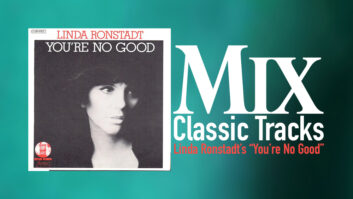
This month’s cover story started out as a simple half-page assignment on the release of a DVD-Blu-ray. A notice had gone out to journalists that Ron Howard and Imagine Entertainment would be releasing Eight Days a Week—The Touring Years, a documentary on the Beatles’ five-year run of live performances, with never-before-seen footage and the whole nine yards. The package would include a remixed edition of The Beatles at The Hollywood Bowl and the theatrical-only re-release of The Beatles at Shea Stadium TV special from 1966.
Within about five minutes, Matt Hurwitz, our resident Beatle-phile and a fine contributing writer, called and asked if he could do a piece. I said, “Sure, give me 400 words, a who, what where, when and how.” Six weeks later, he turned in 9,134 words.
My first thought was: Nobody reads that many words anymore! Then I read it, took in the information he had gathered, much of it all-new, thought about the Mix audience, and decided to blow it out. The cover, plus eight pages inside. Because nobody—no artist, no band, no celebrity of any kind—has captured the mystery and mastery of the recording industry, the mystique of the musical and recording arts, like the Beatles. I can admit today that the fascination somewhat surprised me when I joined Mix in 1988. I understand it a lot better now. I’ve seen John McBride’s collection of 21,000 pieces of Beatles vinyl. I’ve talked with the amazing engineer John Harris and heard the stories about George. I’ve gone back and listened.
Perhaps nobody is more engrossed in the Beatles than Matt Hurwitz, and in the cover story he dives into the technologies and the people that really helped launch the modern rock and roll show back in 1964 and 1965, with the Beatles tours of the States. Only three multitrack recordings exist of those years, two from the Hollywood Bowl and the other from the famed Shea Stadium show. The production, as you can imagine, involved a lot more than trying to overcome screaming teenage girls. It involved the best technical and creative minds at Capitol, the late, great Wally Heider, the money from Bob Eubanks, and the technical know-how of George Velmer and Bob Norberg. It’s a great story.
But that’s only half the story. The restoration process led by Giles Martin, son of George Martin, and the team at Abbey Road, took those tapes and restored them as they felt the energy demanded. Using deMIX technology developed in house by James Clarke, they were able to separate individual tracks and then engineer Sam Okell remixed them to a more accurate picture of what a night at The Bowl would have been like at the time. Primitive P.A., lots of cables and wires, Sound Tower to stage left, two Ampex 300 4-track machines in a box truck, and four microphones on the stage. But the energy is what they went after, the live experience of seeing the Beatles on stage. And it sounds fantastic!
And Matt Hurwitz, our resident journalist-detective, put it all together—the original recording, the original TV productions, the post-production on the originals and the re-releases, and finally, how it all came together to show a part of the Beatles that hadn’t really been explored before—The Touring Years. Well done, Matt.
Looked at another way, it’s the perfect cover story to send to the NAMM Show, where musicians, engineers and live performance all come together for a wild weekend in Anaheim. Every man, woman and child walking the aisles might give a silent nod to the Beatles. They laid the foundation, in the studio and on stage, for everything that followed.







